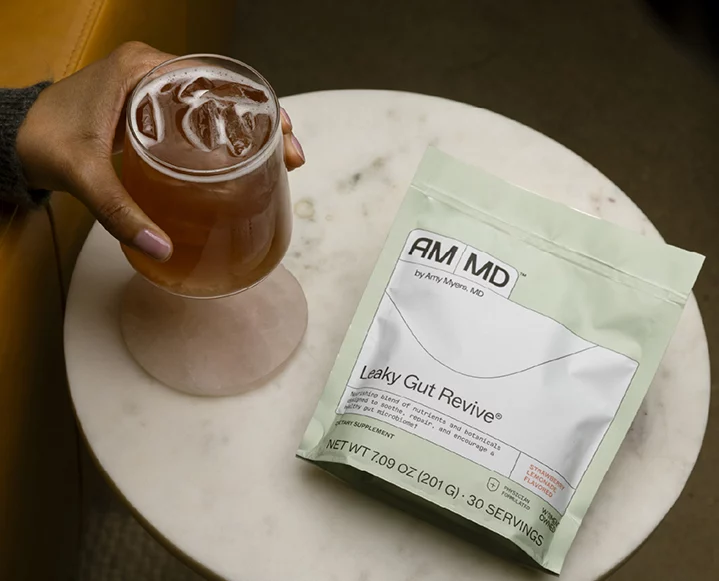Better sex, flatter abs and generally improved health are all related to the mysterious muscles of the pelvic floor. We’re impressed with this (very) personal training routine from yoga veteran, Karly Treacy, who healed herself from some pretty intense conditions with it, and helped us introduce this topic a few years back.
Neglected pelvic floor muscles can cause our whole body to become unstable and susceptible to pain. Karly experienced these downsides firsthand, and her health horror story is all the motivation we need to start on those kegels – stat.
From the right way to do kegels to this targeted yoga flow, we’re leaning in on those pelvic floor muscles and sharing why anyone with a womb should be doing the same…
Why Does Pelvic Floor Strength Matter?
If I knew then what I know now, I would have made my pelvic floor a priority from my teen years! I spent my teens running track and cross-country, my twenties running long-distance road races and marathons. Because I was young and ‘strong,’ it never occurred to me that when I ‘leaked’ when running, it was due to a lack of strength of certain muscles. In my thirties, I had three children in very quick succession, which led me to a doctor’s appointment that has inspired me to make sure everyone gets to know their pelvic floor!
A few months after my third child was born, I went to my doctor to ask about a bit of skin that was hanging near my vagina. I found it annoying and it got in the way during sex. He informed me that he could not trim the skin because it was my bladder. Due to lack of the strength and flexibility in my pelvic floor, my pelvic organs – bladder, bowels and urethra – had prolapsed (similar to a hernia: there is a space in the muscles and they do not support the organs, so they drop down).
I was told that major surgery with the placement of mesh was my only option for repair. Not a proponent of surgery, I opted to take nearly a year to study with countless pelvic-floor specialists, physical therapists, doctors, chiropractors, etc. in an effort to understand how this could have happened and how I could potentially remedy the issues.
I am pleased to say that nearly the entire pelvic-organ prolapse situation was remedied with the right exercises. I did have to have one little surgery, but it was outpatient, no mesh and just one stitch to put the U back in my urethra that had prolapsed. (Yes, really!)
What I learned along the way is that the pelvic floor is a matrix of muscles that do a lot! In addition to supporting all of the very important organs in the pelvis, keeping us from ‘leaking’ and preventing frequent urination and lower back pain, they are responsible for our sexual satisfaction. In women, too tight and/or weak muscles can make sex painful and inhibit the ability to orgasm or minimize the intensity of the orgasm. In men, it can present as erectile dysfunction.
The pelvic floor gets compromised most often due to prolonged sitting (desk jobs and driving), heavy lifting, long-distance running, pregnancy and child birth, impact sports and being overweight.
Where’s My Pelvic Floor?
Before you begin strengthening your pelvic floor, you must first assess if you have tight pelvic-floor muscles. This can be done by a qualified medical professional or you with self-assessment. Qualified therapists can do an internal exam to more accurately tell you which muscles are tight or weak, but we can tell a lot by palpating the tissues between the sit bones, pubic bone and tailbone. The matrix of the pelvic floor lies between these four points. When you apply pressure, if there is discomfort or pain, it is likely due to muscle tightness. Gently massaging the area with your hands or rolling lightly on a tennis ball can greatly loosen the constriction of these muscles.
HOw Do I Get Started?
After the initial assessment, breathing exercises are the most effective way to begin further stretching and strengthening the pelvic floor directly. Strengthening the muscles that structurally support the pelvis also greatly aids the function of the pelvic floor. When the pelvis is well stabilized from the outside, the pelvic-floor muscles on the inside can more easily connect, integrate and support.
The next step is to start strengthening. I’ve mapped out eight simple but effective exercises below. Doing this little bit of work 4-6 times a week will make a great difference in the strength and flexibility of the pelvic floor, better supporting all of those important organs. It can also alleviate back pain and give you a much flatter low belly! It’s pretty much a giant win all the way around!
The Work: Kegels + 7 Strengthening Yoga Moves
Kegels the right way
Sit in a simple cross-legged position (if this is not comfortable, sit on a yoga block, blanket, bolster or sofa cushion). Inhale deeply, sensing into the muscles that lie between the two sit bones. Imagine each sit bone is an elevator door. As you exhale, draw these muscles toward one another closing the elevator doors. As you inhale the doors open and release. Repeat for 4 rounds of breath.
Now imagine that the pubic bone and the tailbone are the elevator doors. On an exhale, draw the muscles toward one another, closing the elevator doors. As you inhale, release, allowing the doors to open. On an exhale, draw all four points to center, the two sit bones, pubic bone and tail bone. Release on the inhale. When you feel like you can fully draw all four points to center closing the elevator doors, you attempt to lift the elevator up. Imagine there were three floors from the pubic bone to your navel. With every exhale; see how high you can lift the elevator. Repeat for 4 rounds of breath.
Keeping a long spine, fold forward over your legs to get a stretch in the outer hips. Hold for 8 breaths. Switch the cross of the legs and repeat.
Note: You may not feel kegels the first 20 times! After having three babies within three years, it took me several weeks to really wake up these muscles.
I have also found that it is easier for some people to find the right muscles lying on their back with the knees bent and the feet planted hip-width distance apart, or lying in a reclined position supported by a block and bolster. The key to kegels is to try different positions to determine which makes this work most accessible and then when the muscles are well awake, you challenge them in the other positions that were a bit more difficult.
Butterfly stretch + fold forward
To lengthen the inner thighs and then further stretch the outer hips, bring the soles of the feet to touch. Press the bottoms of the big toes together firmly and sit tall. Hold for 8-10 breaths. Then fold forward. Hold for 8-10 breaths. (Try a few kegels and breathing exercises in this position.)
Arching + rounding
On all fours, with the wrists beneath the shoulders and the knees beneath the hips, feel the entire hand ground to the earth while keeping the arms strong and straight. The shins press down to make the thighs strong. The arms and thighs are like pillars and your spine undulates like a suspension bridge between the four pillars. As you inhale, the tail and heart lift to the sky. As you exhale, press the mat away, scoop the belly in and round. As you inhale allowing the tail to reach up, you once again stretch the pelvic floor. As you exhale completely and round, the pelvic floor lifts and gathers together creating more pelvic-floor integrity. Repeat for 10 cycles of breath.
Downward-facing dog into Plank
Start in downward-facing dog. As you inhale fully, you will shift forward until you arrive in plank. On the exhale, feel the pelvic floor begin to gather, the low belly will lift and send the hips back to downward-facing dog. Continue to move with the breath. Repeat for 10 cycles of breath.
Utkatasana (chair pose)
Center your weight over the heels, sit back as you would into a chair. Keeping the entire foot on the ground – especially the inner foot, which often gets light in this posture – reach the arms overhead. You will have to find a bit of tone in the low belly here. Imagine you are trying to zip up a tight pair of pants to get the lowest belly to lift. At the same time, get a sense that the outer hips are hugging toward one another and the sit bones are reaching toward the earth. Keep that as you breathe fully and you will notice the breath more in the back body. This pose activates the pelvic floor from the hips hugging in and the belly lifting. Hold for 6-12 breaths.
Garudasana (eagle pose)
Start in utkatasana. Cross the right leg over the left and wrap it around once or twice. If you find yourself struggling with balance, cross the legs and let the toes rest on the ground for support. Reach both arms straight out front, cross the left arm under the right, wrapping once or twice. Do the actions of utkatasana and feel the outer hips hug together and the low belly lift up. This posture further activates and strengthens the pelvic-floor muscles. Hold for 6-8 full cycles of breath. Switch sides and repeat.
Bridge pose into eka pada variation (single legged)
This posture greatly strengthens the outer hip muscles that stabilize and support the pelvis. When these muscles are weak, allowing the bones of the pelvis to splay, the pelvic floor cannot adequately gather or strengthen. Lying on your back, bend the knees and plant the feet hip-width distance apart. The knees align over the ankles. Inhale to lift the hips and walk the shoulders beneath you, interlacing the hands (if this is difficult, just bend the elbows and let the fingers point to the sky). The chin is parallel to the earth. Feel the feet ground evenly and the outer hips hug toward one another. The basin of the pelvis is soft and hollow and not thrusting to the sky. Hold for 6 breaths.
Stay in bridge, keeping the pelvis still, firm the outer hips together and extend one leg to the sky. Notice if all of your weight shifted to one side. Try to keep everything absolutely stable at center. Hold for 6 breaths. Switch legs and repeat 3 times.











